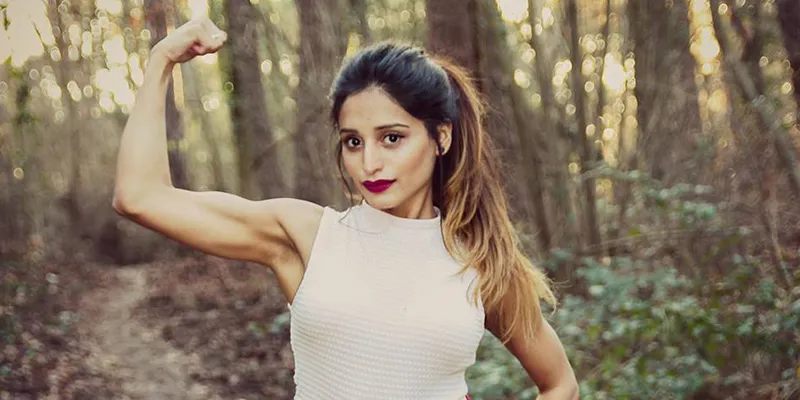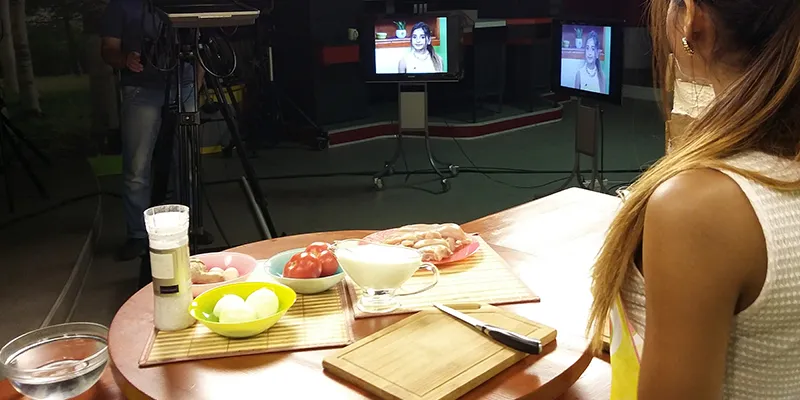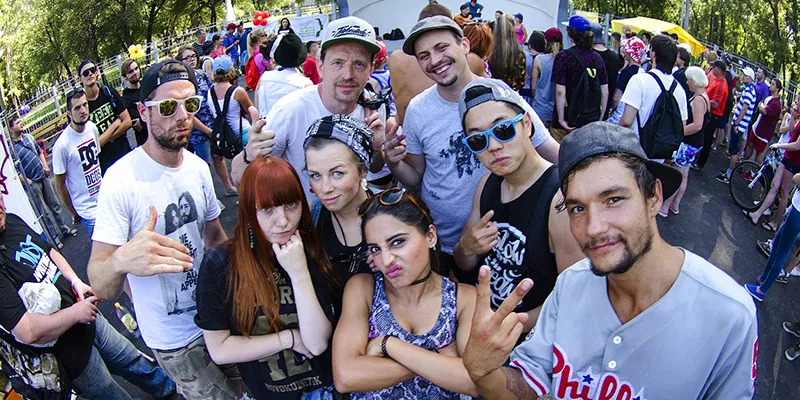How Kajal Singh aka Dizy went from being a shy Delhi girl to one of India’s first female graffiti artists
One of India’s first female graffiti artists, Kajal Singh, 22, was never an average Jane.
“Even as a child, I knew I was different. I never merged in with the crowd and wanted to lead.” she recalls.
Although a shy child, she was extremely competitive both at home and in school. Art has always been an integral part of Kajal’s life. Her mother is a painter while her brother is also a graffiti artist who goes by the pseudonym ‘Komet’. Despite being born into a family of art and being a talented and creative young girl, learning Bharatnatyam, acing school dance competitions and managing to stand out from the crowd, Kajal had never imagined becoming a graffiti artist.

From Kajal Singh to ‘Dizy’
In ’70s and ’80s America, hip hop served as a platform for the minority to express themselves regarding social and political injustice and other issues. However, it only began to attain widespread popularity in the late ’80s and early ’90s. Eventually, this genre helped create unity amongst the races and turned into an $80 billion market.
While most of us may equate hip hop solely with rap music, the hip hop movement actually consisted of four distinct elements: rap, DJing or turntablism, B-boying, and graffiti.
Over the last few years, while hip hop has undergone a slowdown and is in a phase of evolution in its place of origin, the US, it has gained widespread popularity here in India. There are over 200 million youth with increasing purchasing power who are making a beeline to become a part of the movement and this number will only expand the current $80 billion market.
But things were not the same a few years ago, when Kajal had her first tryst with the movement. She was introduced to hip hop by chance through a friend in 2008. However, Kajal only got to see the street dance aspect of the movement at that time. Her flair for dancing had found a new muse and she was so smitten by the genre that she started frequenting these events, or jams, as they are called in hip hop terminology. As she got acquainted with the movement and the community, Kajal and her brother were introduced to the art aspect of hip hop, which we popularly know as ‘graffiti’.
“We were so excited! It was so cool to see spray paints. It was then that we decided to get into this art,” she says excitedly.
It was during this period that Kajal came to be known as ‘Dizy’. Since graffiti is still illegal in some countries, most artists go by a moniker. So, how did Kajal choose hers?
“Actually ‘dizzy’ means mad, and I thought being the first graffiti girl in India was crazy, so I just kept it Dizy with a single ‘z’!” she says.

Being a girl in an evolving hip hop culture
The brother-sister duo started by emulating foreign artists they discovered online. Kajal and her brother learnt the basics of the art including the basic knowledge of letter proportions and dimensions through these videos and incorporated this knowledge to develop their own style of art. This was when the graffiti scene was just beginning to develop in India and every artist was encountering the problem of acquiring the extremely expensive spray paints.
“It was as luxurious an item as gold for us. Since most of us were just about getting started, most of our savings would go into buying these spray paints,” Kajal explains. But as they say, necessity is the mother of invention and the artists developed a ‘Jugaad’ to overcome this problem.
“We started working with wall paints as a base and used the spray paints only for outlines.”
Kajal was fighting an even bigger battle in addition to all the operational challenges the graffiti artist community in India was reeling under as a whole. Being one among the very few girls in the hip hop scene, let alone in graffiti, was anything but easy.
“There were always prejudices. Being a girl meant always feeling the pressure of doing well all the time and proving why I was better than the boys. Also, the boys were thought of to be more free-spirited than the girls and were always preferred over us. It was very difficult, the problems just didn’t seem to end.” she recalls.
But Kajal was not one to be easily discouraged. She kept reminding herself of why she got into graffiti in the first place and that kept her going.
“I’m so glad I got through that phase. I am a free bird now!” she exclaims.

The turning point of Kajal’s life was when she was called to Germany to work with the Indo-German Hip Hop Urban Art Project in 2012. Her career only went upwards from then on. She worked on the same project in India in 2014 in the cities of Delhi, Mumbai and Kolkata and in Germany again in 2015. In the same year, she also travelled to Siberia and Russia where she was invited to feature on a cooking TV show.
A cooking show??!
“Yes, I spoke about graffiti while cooking our quintessential spicy Indian chicken curry,” she chuckles.
She also showcased her skills at an art exhibition at the Creative World Fair at Frankfurt, Germany, hosted by the graffiti marker company she works for currently. The Delhi girl jet sets around the world to showcase her art while frequently shuttling between her hometown and Berlin.
“Travelling changed me,” she says, speaking of the exposure she has gained, adding “I was an ignorant little Indian girl but now I feel like a different person altogether. All my travels have broadened my horizons. I have learnt a gamut of tricks and tips from every artist I have met, each of them has their own unique style and that helps me evolve my own personal style.”
The hip-hop scene in India – then and now
Being one of the first, Kajal has been witness to the fast evolving hip hop scene and she feels hip hop has indeed come a long way in India.
So what has changed since she started?

“We have better access to spray paints! There are only a few companies who are manufacturing it, but the situation is so much better,” she says, heaving a sigh of relief. Kajal also feels more girls are becoming a part of the hip hop scene, and the number is seeing a healthy growth.
While girls feeling welcome to join the movement is a big positive, what is also interesting to note is India’s openness to street art.
Graffiti and breakdancing were the first aspects of hip hop culture to capture public attention, but also fizzled out as the years passed by, having the least lasting effect. The graffiti movement was started around the year 1972 by a Greek-American teenager who signed, or tagged, in hip hop terminology Taki 183 (his name and street, 183rd Street) on walls throughout the New York City subway system. Soon, it went on to become a trend that big art dealers in the United States, Europe, and Japan had started displaying in major galleries. However, the situation in New York, where the art originated, was a stark contrast, the New York City’s Metropolitan Transit Authority, armed with dogs, barbed-wire fences, paint-removing acid baths, and undercover police squads, was leaving no stone unturned in eliminating all graffiti.
And while the world continues to be divided on whether graffiti is good or bad, India has a surprisingly refreshing perspective.
“India is more receptive to street art than Europe. Indians don’t think of graffiti as a menace the way some other countries do because it’s a novel experience for them to see a whole wall covered in bright colours and art. In Europe, it’s not new anymore and not many people see graffiti as art or appreciate it,” she says.
Dizy is a part of the large community of artists which is trying to bring about change and propagate peace by creating thought provoking pieces of art. But can art change anything?
“Of course it can. Every project I am part of is not just about painting but also about collaborating with people from all over the world. It is not just an assignment, but an exchange of our respective cultures. The whole process of creating a piece of art stems from values of unity and mutual love,” she says.
The artist, who is also a fitness blogger and dancer has some advice for those who like herself want to do something no one else has ever done before.
“Be true to yourself and hustle,” she signs off in true hip hop style.







